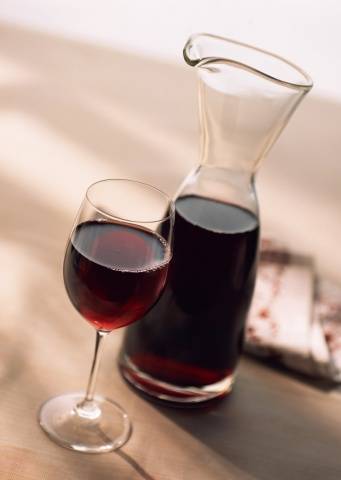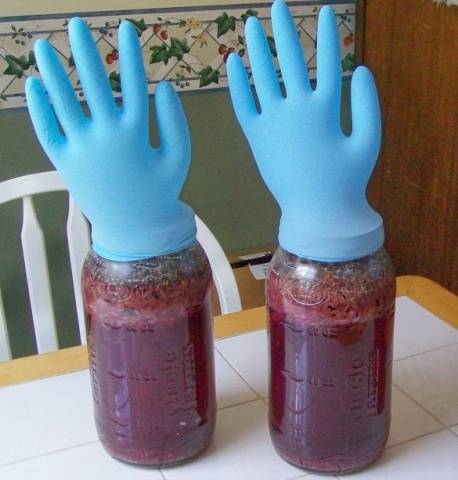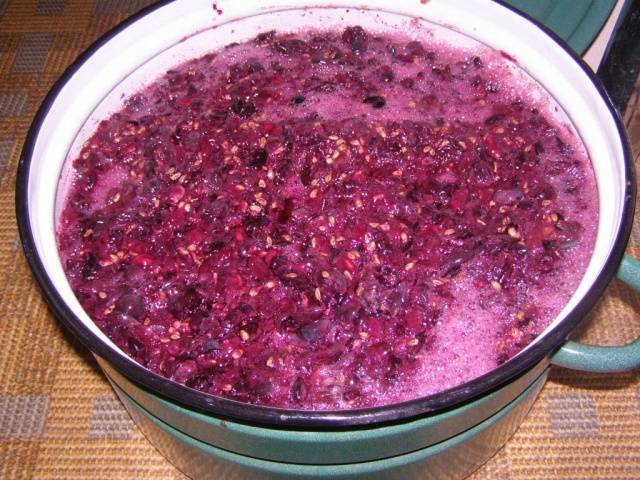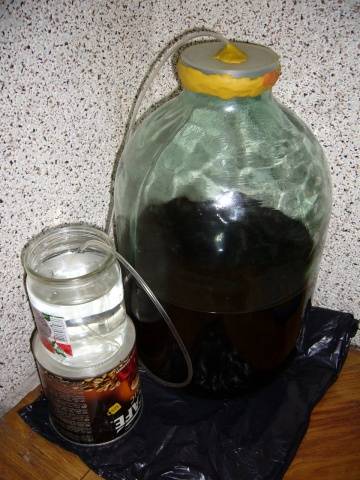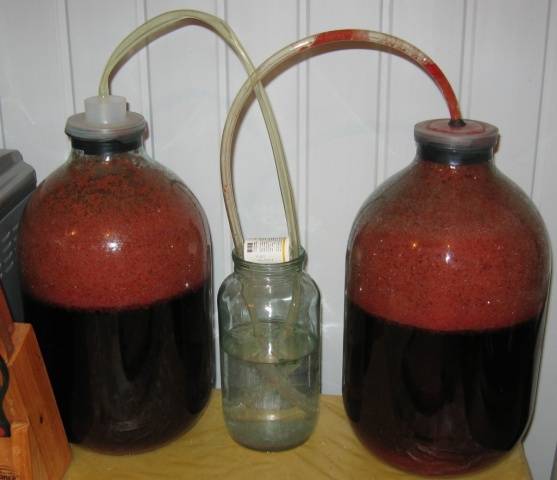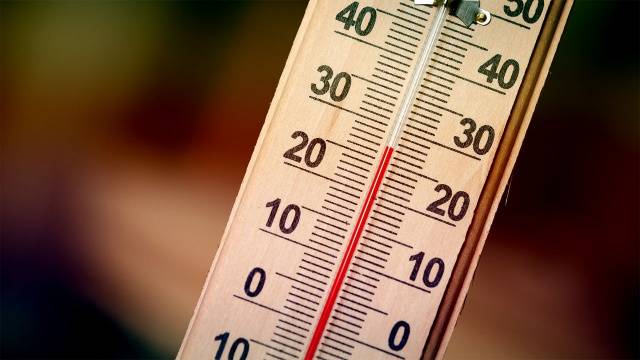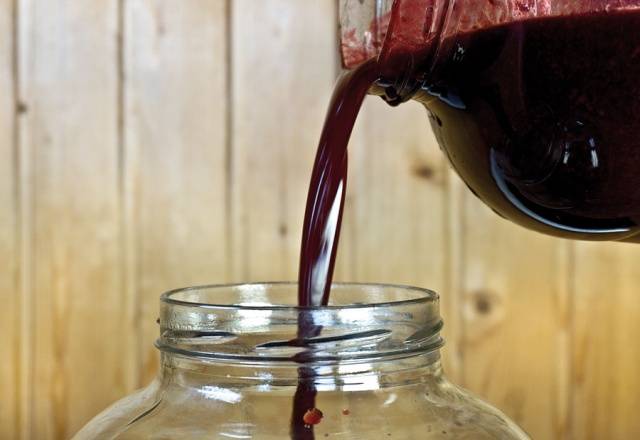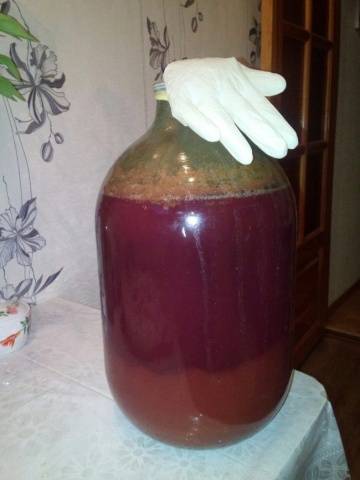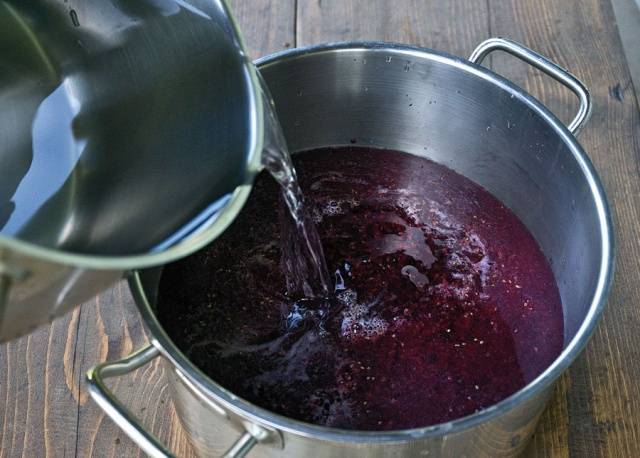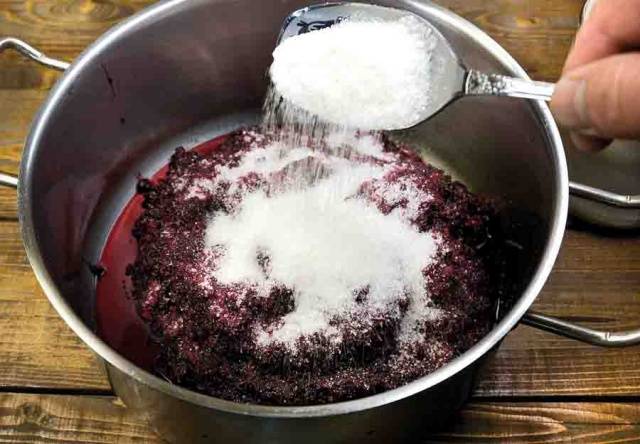Content
People who are engaged in home winemaking sometimes face this problem when the fermentation of wine must suddenly stops. In this case, it is quite difficult to determine why fermentation stopped, because such an incident can happen even if the entire technology of making homemade wine is followed. AND This problem is quite serious, because it can lead to spoilage of all wine material, which means that the work of the winemaker will go down the drain and the products can be thrown away.
To decide what to do in such a situation, you first need to find out why the wine stopped fermenting in a particular case. What factors can provoke a stop of the fermentation of homemade wine, and how you can resume this process - this will be an article about this.
Features of the fermentation process
The technology for making homemade wine can be different, in addition, various products can be used in winemaking: fruits, berries, grapes. But anyway homemade wine must go through a fermentation process, otherwise the juice of fruits and berries will not turn into a wine drink.
Wine or yeast is responsible for the fermentation of fruit juice. Usually such fungi are found on the peel of fruits and berries, and represent a whitish or grayish bloom.
These fungi feed on sugar, in the process of their life they process sugar, turning it into alcohol - this makes juice an alcoholic drink. In addition to alcohol, carbon dioxide is produced during the fermentation process, it is he who inflates the gloves on bottles with wine or comes out in the form of air bubbles from under the water seal.
Natural sugars are found in almost all fruits or berries, only their amount can vary. For winemaking, those products are suitable, in which a fairly high content of natural sugar in the form of glucose, sucrose and fructose.
The sugar content of fruits and berries may depend on factors such as:
- crop variety;
- ripeness of fruits or grapes;
- fruit picking time;
- the time of holding the fruits in the interval between the harvest and the laying of the wine.
For the preparation of high-quality homemade wine, it is recommended to collect only fully ripe fruits and berries, do it on time, prefer varieties with a high sugar content of the fruit (the taste of the fruit should be more sweet than sour).
Insufficient natural sugar content of the products forces winemakers to additionally use granulated sugar. The difficulty lies in the fact that it is very difficult to calculate the appropriate amount of sugar, so it is better to immediately take moderately sweet fruits and berries for homemade wine.
Why does homemade wine not ferment
Not only beginners, but also experienced winemakers can face the problem of stopping the fermentation of homemade wine. Moreover the wine may not initially ferment, or suddenly stop fermentation. There may be several reasons for this, all of them require a special solution.
Why fermentation of homemade wine may stop:
- Too little time has passed. Wine fungi take time to get started. The rate of yeast activation depends on several factors, including: the sugar content of the wine, the type of raw material, the temperature of the wort, the type of sourdough or the type of fungus. In some cases, the wine may begin to ferment a couple of hours after the bottle has been closed with a water seal. And it also happens that fermentation begins only after three days.Both of these situations are the norm, but the winemaker should start worrying when the wine does not ferment for more than three or four days after the fermentation of the must.
- The wine container is not airtight. The fact is that the normal fermentation of homemade wine should take place when the product is completely sealed, that is, air should not get into the wine from the outside. It is not the air itself that is dangerous for wine, but the oxygen contained in it. It is oxygen that causes the wort to sour, the wine eventually turns into wine vinegar. It often happens that a winemaker thinks that his wine does not ferment, as he judges by a deflated glove or the absence of bubbles in the water seal, but it turns out that the bottle is not tightly closed. As a result, carbon dioxide escapes from under the lid or under the elastic of the glove, so it turns out to be deflated. Wine, nevertheless, ferments, it is simply not visible. It would seem that there is nothing dangerous in such a situation, but it is not. The fact is that at the end of the process, fermentation weakens, the pressure of carbon dioxide becomes not so strong. Because of this, oxygen from the air can easily get into the container and spoil everything that has almost fermented wine.
- Temperature fluctuations. For normal fermentation, the wine should be kept in a room with a temperature of 16 to 27 degrees. Fungi live and work until the temperature of the wine drops below 10 degrees and does not rise above 30. If cooled, the yeast "falls asleep" and precipitates, and if the wine is overheated, the fungi will simply die. Wine fungi still do not like temperature fluctuations: the wine will ferment well only at a stable temperature.
- Violation of sugar content. The permissible limits for the percentage of sugar in wine are from 10 to 20%. If these boundaries are violated, fermentation will stop. With a decrease in sugar content, the fungi have nothing to process, turning all the sugar in the wort into alcohol, they die. When there is too much sugar in wine, the yeast cannot cope with that amount and the wine is canned.
- "Inoperative" yeast. Most winemakers use wild yeast to prepare homemade alcohol, that is, those found on the peel of fruits and berries. Wild fungi are very unpredictable, they can develop violently at first, and then abruptly stop the fermentation of wine. Perhaps this is even with an insufficient amount of yeast, when the fruits are washed or it rained on the eve of harvest, for example.
- Density of berry or fruit juice. Some wine products, such as plums, currants, mountain ash, are very difficult to give juice, after crushing they form a thick puree. It was found that the thicker the wort, the more difficult it is for it to ferment.
- Mold. When making homemade wine, it is very important to observe complete sterility: containers, hands, food. In order not to infect the wine with mold fungi, all dishes must be sterilized and washed with soda. Do not put rotten or spoiled foods in the wort, they can be contaminated with mold. Moreover, the use of material on which there are already traces of mold is not allowed. Therefore, before preparing the wine, berries and fruits are carefully sorted out.
- The natural end of fermentation. When the alcohol content in wine reaches 10-14%, the wine yeast dies. Therefore, homemade wine cannot be stronger (unless it is fixed with alcohol, of course). Most often, homemade wine fermentation lasts from 14 to 35 days, after which the process gradually slows down until it stops completely. You can find out about this by the appearance of sediment at the bottom of the bottle, clarification of the wine itself and the absence of bubbles in the structure of the water seal or deflated glove.
What to do to make the wine ferment
Having found out why the wort has stopped (or not started) fermenting, you can try to correct this situation. The methods for solving the problem depend on the cause.
So, you can make the wine ferment in the following ways:
- strengthen the tightness of the lid or water seal. To do this, you can use batter or other sticky mass, with which to coat the neck of the bottle where it touches the lid or glove. Open the bottle less often, and if you do it, then only for a few minutes.
- Provide the wine with a constant suitable temperature - from 16 to 27 degrees. If the wort is overheated, you can try adding some special wine yeast to it - fermentation should start again.
- If the wine hasn't started fermenting within four days and looks too thick, you can try to thin the wort by adding a serving of sour juice or water. The liquid should be no more than 15% of the total.
- Check the sugar level with a special device - a hydrometer. If there is no such instrument at hand, the wine is tasted: it should be sweet, like tea or compote, but not cloying (like jam, for example) and not sour. Sugar can be added no more than 50-100 g for each liter of juice, otherwise fermentation will not start. It is better to add granulated sugar in small, equal parts at intervals of several days. So the fungi will process sugar gradually, which will prolong the fermentation of the wine.
- When the reason for stopping fermentation is low-quality yeast or an insufficient amount of it, you need to add a fresh portion of the fungi. They can be found in special sourdough, store yeast for wine, quality raisins, or a few unwashed grapes. These components are added to the wort and mixed.
This can be done in several ways: add alcohol to the wort, take the bottle to a room with a temperature below 10 degrees, heat the wine to 35-55 degrees (this process is called pasteurization). In all these cases, the fungi die and fermentation stops.
If homemade wine has stopped fermenting, this is not yet a reason to pour it out - the situation can be corrected. First of all, the winemaker must find out why this happened, where he violated the technology, and then take appropriate measures.
There are also cases when it is impossible to help the wine. Then it remains to learn from your own mistakes in order not to allow them in the future.
